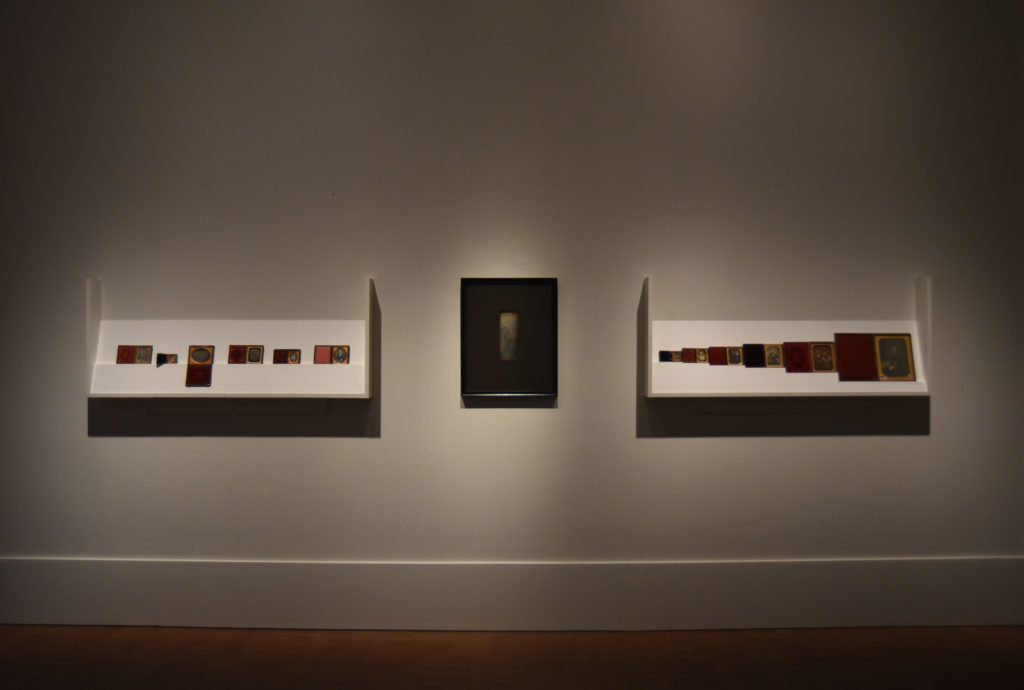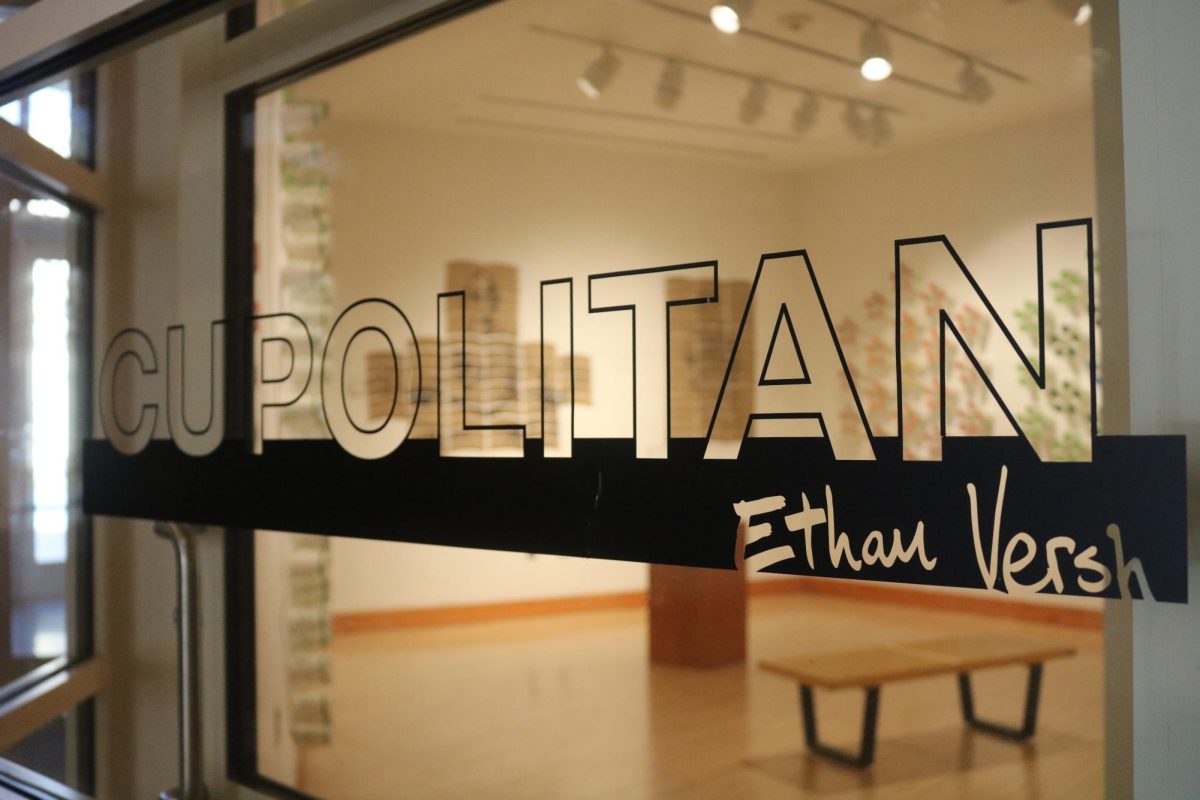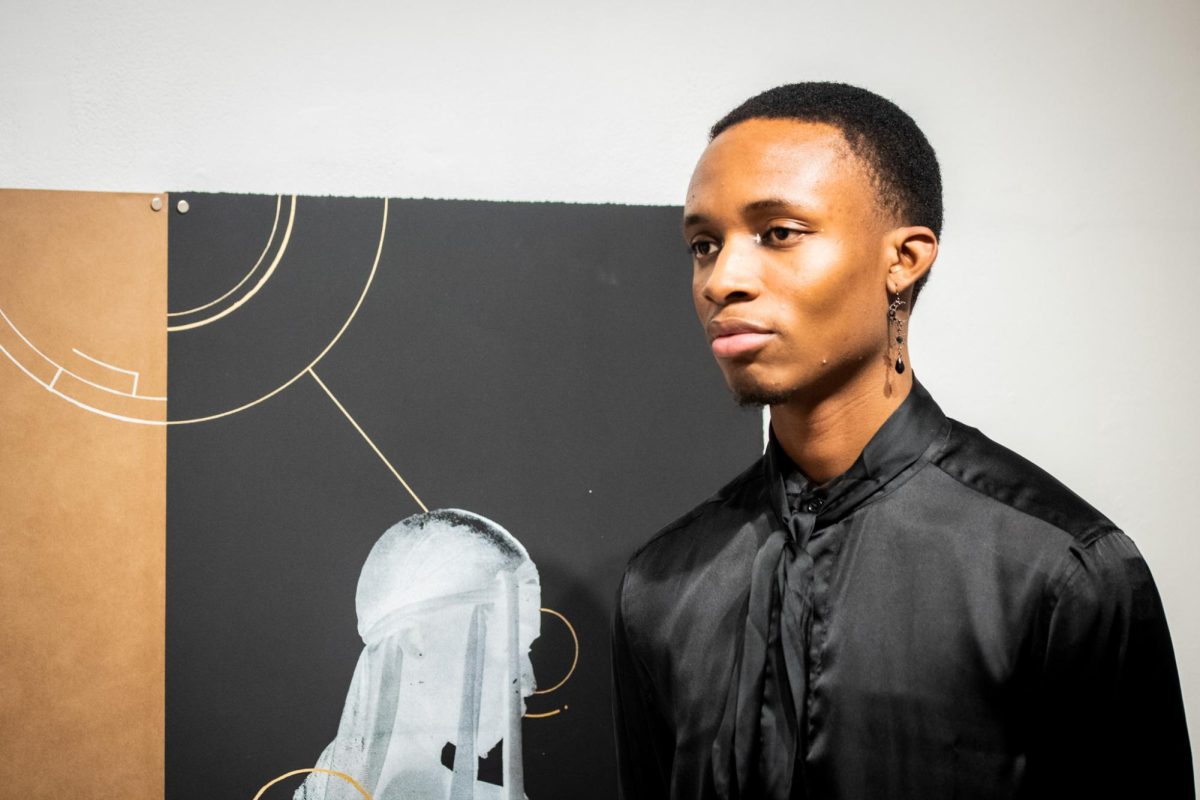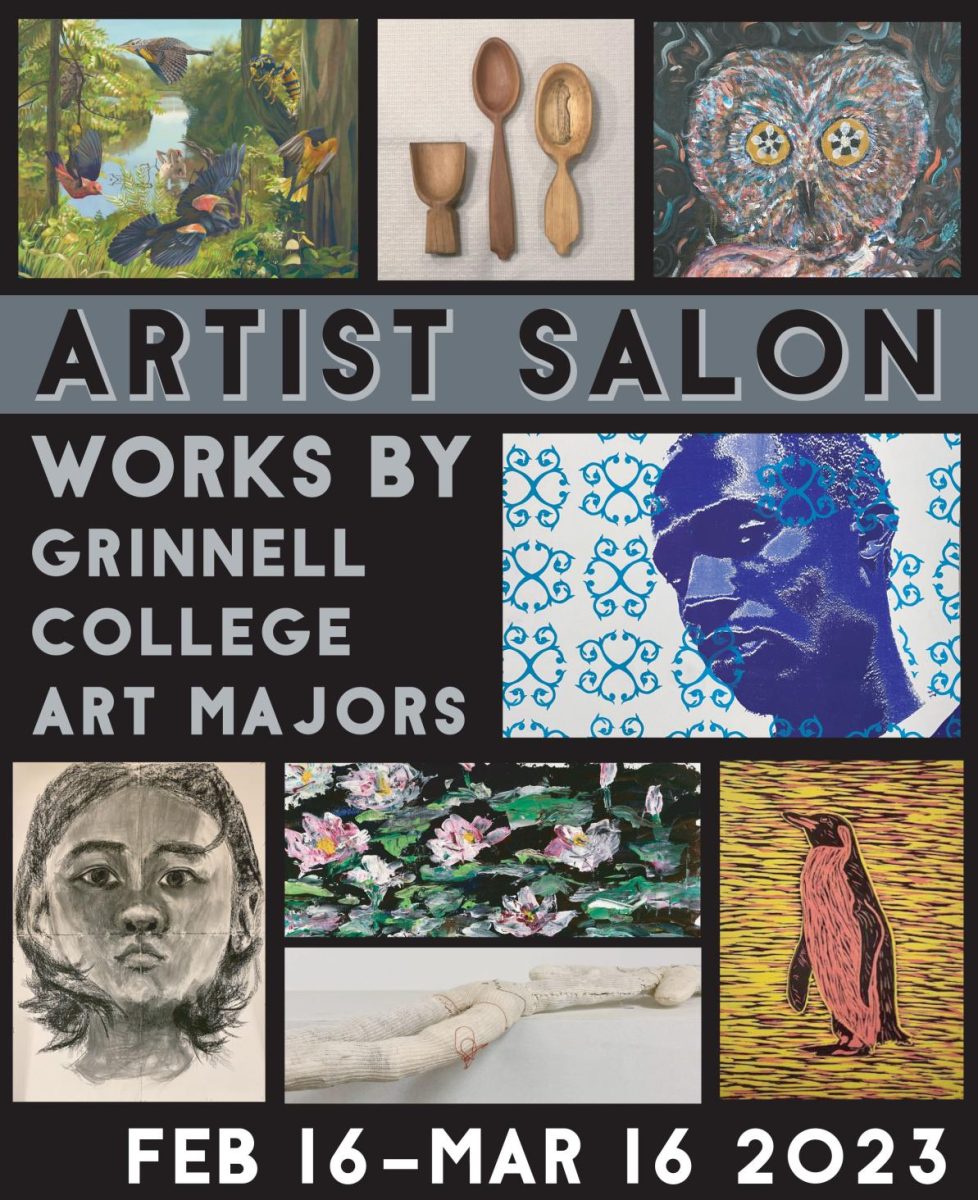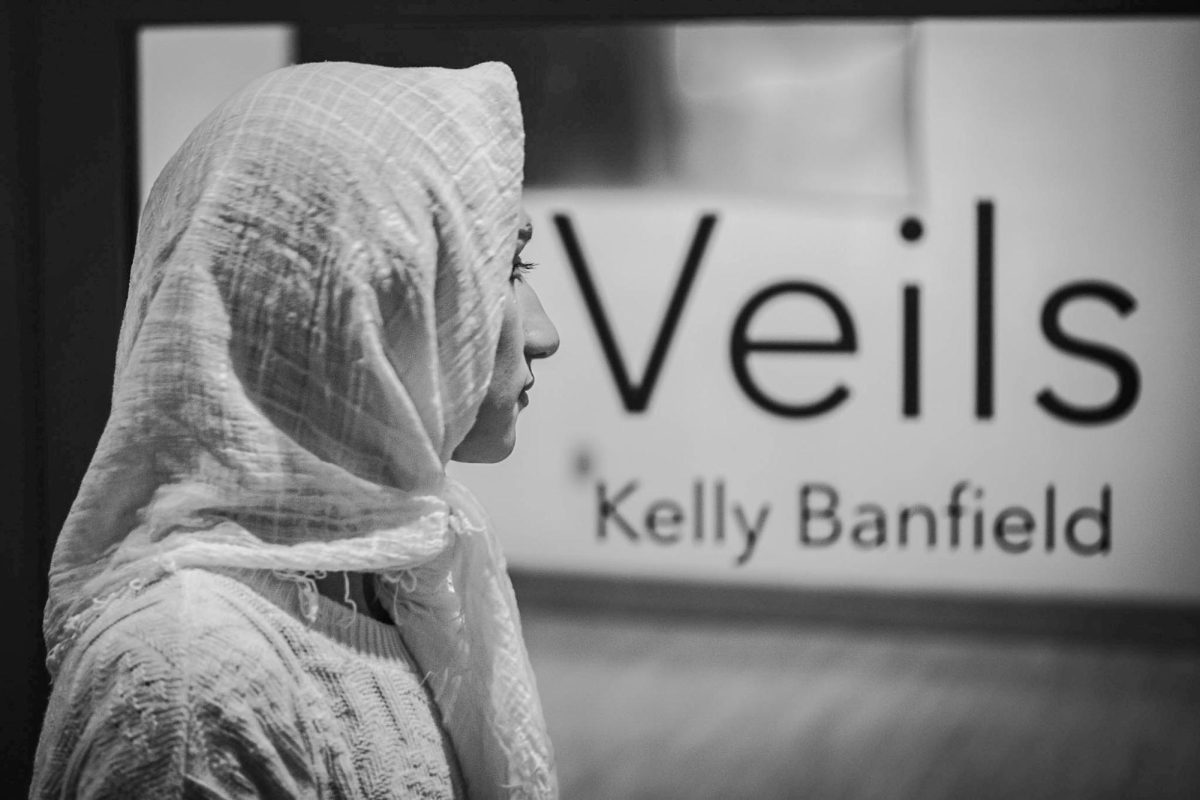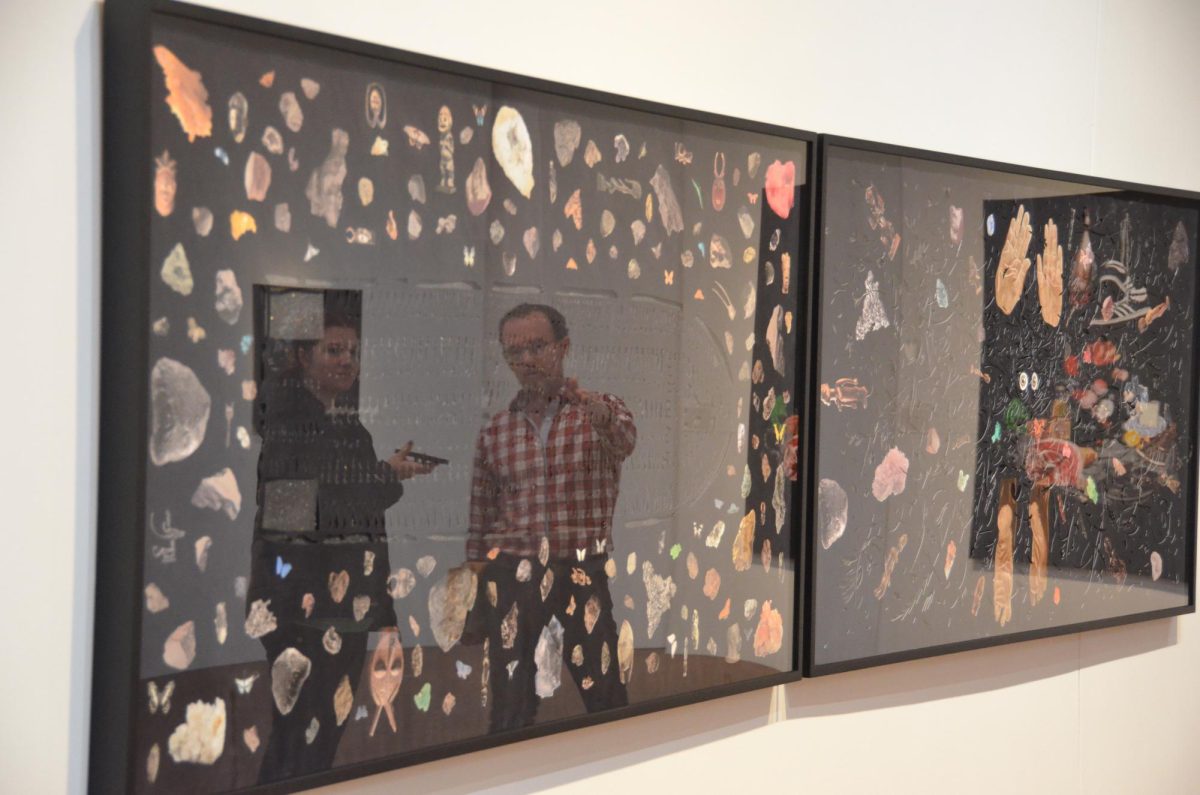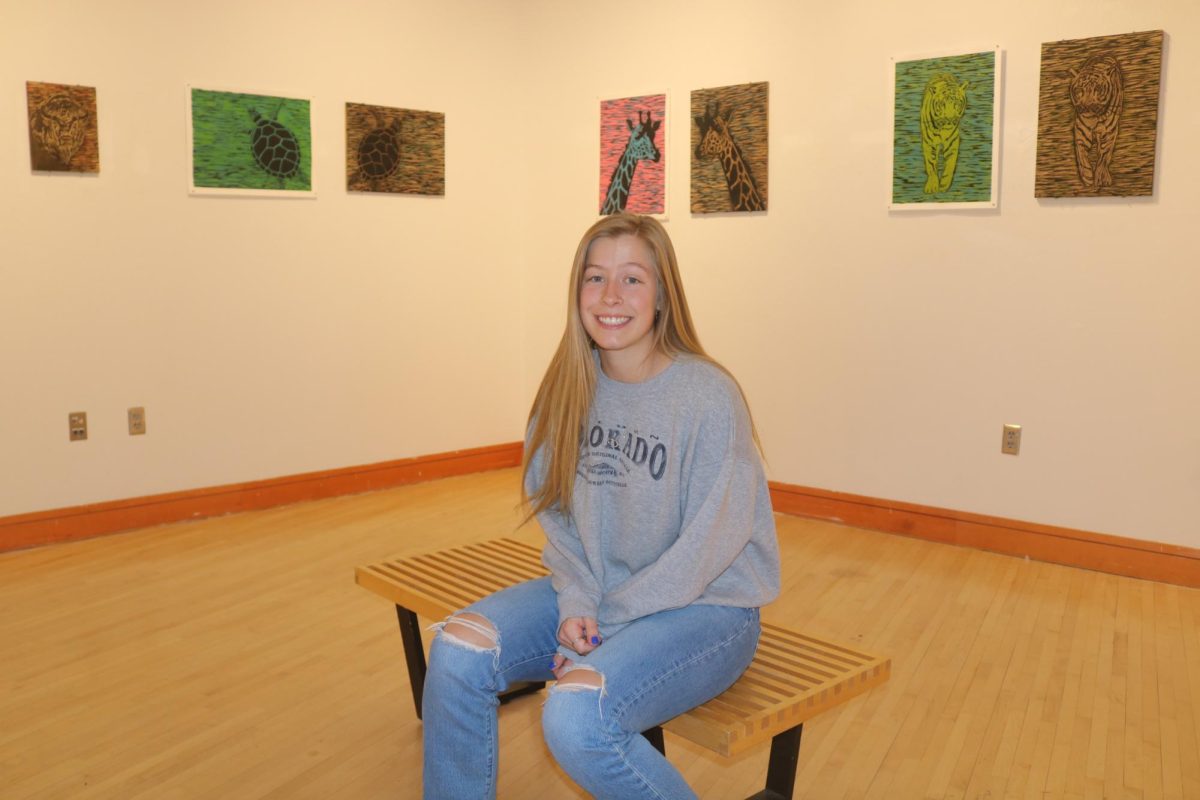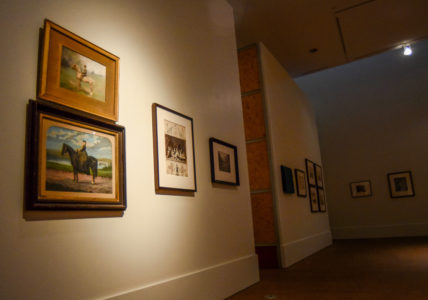
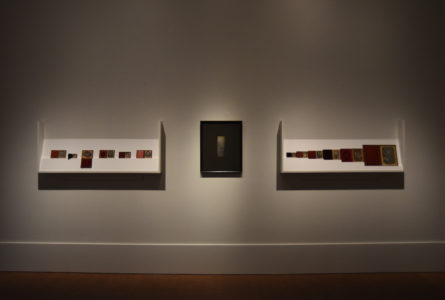
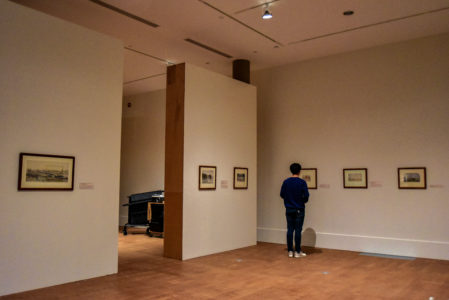
In Grinnell’s Faulconer Gallery, underneath dim lights, rest portraits — photographs of family members, friends, neighbors.
“Lighting levels are really important in every show,” said Milton Severe, director of exhibition design at the gallery. “Any light that falls on any work on paper causes some deterioration, so you want to cause as little deterioration as possible, and then hopefully at the same time have enough light so that people can actually see what you’re looking at.”
In this show in particular, the age of many of the photographs is also more susceptible to light-related deterioration. Many of the photographs in the exhibit are the only, or original, copies — some, in the first section of the exhibit, are called “daguerreotypes.” Daguerreotypes are photos made using an antiquated process that involves iodine-sensitized silvered plates and mercury vapor, said Daniel Strong, associate director of the art gallery and curator of exhibitions, said of the process, “You make one and that’s it.”
In the 1840s, during photography’s inception, people experienced “photography as objects … as this kind of thing that you would hold in your lap and then open,” Strong said. Photography, he said, “becomes a way of remembering family members, often family members that are deceased.” Because of this, there was more of a need to keep those original photographs.
The exhibit, called “Irresistible Images: Photographs,” follows photography from its origins in the nineteenth century through to its new artistic ideals in the mid-to-late 20th century. The exhibit is broken up into three sections: “Pioneering Photography,” “Image as Object” and “Seeing Ourselves.” The photographs, Strong said, were obtained from a collector, Dr. Nigel Maister, theater professor at the University of Rochester, whose collection has been done mostly “by unknown photographers … a field of collecting known as vernacular photography,” which has “become collectable in recent years,” according to Strong.
While the exhibit follows the histories of family members, it also goes through the history of photography itself. “To have this thing that is literally your mirror image,” Strong said, was very new and thus important at the time, and “suddenly you could have this done for a very little amount of money, and as the years go by it got even cheaper, so … we’re now at this point in the 1850s where we have tin-types, which is a photograph reproduced on a cheap piece of tin … these truly were affordable to just about anybody.” This affordability gave an increasing amount of people in the 19th century to have their own photographs done, allowing them to have their own “mirror images” of themselves. “Frederick Douglass,” Strong said, “is somebody who gives a speech about how photography is a medium that is available to everybody, and he actually sees it as a vehicle for social progress … it became a form of self-representation not just for the privileged few.”
In a smaller area of the gallery hangs the exhibition “Watercolors of Corporal John Gaddis,” which takes the viewer through depictions of the American Civil War. The paintings, taken from the Wisconsin Veterans Museum, were created by Corporal John Gaddis during his time in the war, and they depict not the violent parts of that time, but instead the downtime that the soldiers often had. “We tend to think of images of war as the drama, when a lot of what happens during the war is the sitting around and waiting for something to happen,” said Dr. Lesley Wright, art and art history, and director of Faulconer Gallery. The “sitting around” is what ultimately has been captured by Gaddis in these paintings: long, rolling landscapes, fire pits, soldiers building train tracks are all depicted in his paintings — but never the actual fighting. Gaddis, according to Wright, was an “untrained artist but really had some talent … he had a good eye for composition … he’s remarkably good at detail of everyday life.”
Both the photography and the watercolor exhibitions show the art of untrained artists — humans experimenting. They take the viewer through minute parts of history — not the great, incredible moments, necessarily, but instead the simpler areas of everyday life, which can be, and have been, turned into great moments through art.




























































